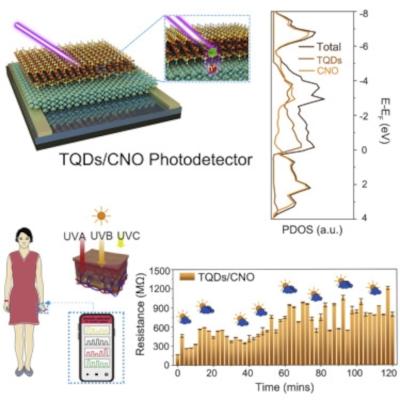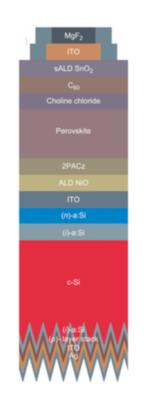Perovskite-Info weekly newsletter
Published: Tue, 12/13/22
The Perovskite-Info newsletter (December 13, 2022)
Cannot read this? View it online here
Researchers use facial mask technique to improve perovskite solar cells
Researchers from China's Nanjing University of Posts & Telecommunications, Sichuan University and Chinese Academy of Sciences (CAS) recently developed a new technology for the production of perovskite films that uses effects similar to those of facial masks, which promote the absorption of skincare products into the skin.
The newly developed technology made it possible to produce high-quality films with a smooth surface and a high efficiency of converting solar energy into electrical power.
Researchers use perovskite and quantum dots to build an ultraviolet radiation measurement device
A team of researchers from China's Chinese Academy of Sciences (CAS), Jilin University and Beijing Institute of Technology, has used perovskite and quantum dots to build an ultraviolet radiation measurement device.
Measuring the intensity of ultraviolet light in outdoor conditions is important because more intense UV light can lead to faster sunburns and potentially to skin cancer in later years. In this new study, the researchers built a wearable device that can measure ultraviolet radiation in real-time and send the information to a smartphone.
Researchers develop a new method for extremely stable perovskite solar cells
Researchers at Oxford University, ARC Centre of Excellence for Exciton Science at Monash University, National Renewable Energy Laboratory (NREL) and SLAC National Accelerator Laboratory have demonstrated a new way to create stable perovskite solar cells, with fewer defects and the potential to rival silicon's durability.
By removing the solvent dimethyl-sulfoxide and introducing dimethylammonium chloride as a crystallization agent, the researchers were able to better control the intermediate phases of the perovskite crystallization process, leading to thin films of greater quality, with reduced defects and enhanced stability.
Researchers design a water-splitting system assisted by monolithic perovskite-silicon tandem solar cells
Researchers from Eindhoven University of Technology, Delft University of Technology and TNO (partner in Solliance) have designed an integrated solar-assisted water-splitting system with a flow electrochemical cell and a monolithic perovskite-silicon tandem solar cell.
The team's work demonstrates how a perovskite/silicon tandem cell can be combined with a water electrolyzer system. However, the team said that there are still many steps that need to be taken before commercialization is possible. For example: upscaling the technology, addressing stability in greater detail, and use of more earth-abundant catalysts in the water-splitting reaction.
Researchers use daminozide as an interlayer and additive for efficient perovskite p-i-n structure solar cell
Researchers from China's East China Normal University (ECNU), Shanghai University, Donghua University and Soochow University have fabricated an inverted perovskite solar cell with remarkable charge transport.
They reportedly suppressed carrier recombination at the interface between the perovskite and the charge transport layer, as well as defect-assisted recombination originating from the perovskite layer. The cell has a p-i-n structure, which means the perovskite cell material is deposited onto the hole transport layer, and then coated with the electron transport layer, unlike with conventional n-i-p device architecture. Inverted perovskite solar cells typically show strong stability, but lag behind conventional devices in terms of conversion efficiency and cell performance.
Meyer Burger establishes new partnerships for high-performance solar modules with perovskite technology
Meyer Burger Technology has signed multi-year cooperation agreements with CSEM from Switzerland, Helmholtz-Zentrum Berlin (HZB), the Fraunhofer Institute for Solar Energy Systems ISE in Freiburg, and the Institute of Photovoltaics at the University of Stuttgart, for the development of high-performance perovskite tandem solar cells and modules.
These activities are focused on the industrialization of the new technologies, moving from the laboratory to mass production with a view to the future expansion of gigawatt capacities at Meyer Burger’s production sites. The aim of the cooperation is the industrial production of solar cells with efficiencies of more than 30 percent.
Metalgrass LTD
9 Har Tsin St.
Kfar Sava Hasharon 4430809
ISRAEL
Unsubscribe | Change Subscriber Options







